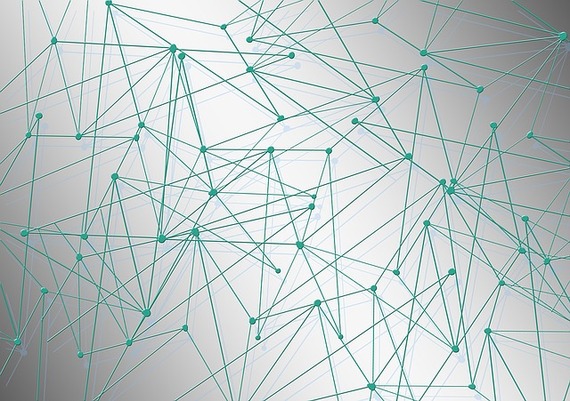by Rod Collins, Director of Innovation at Optimity Advisors
On January 2, 2001, Larry Sanger met his good friend Ben Kovitz for dinner at a small Mexican restaurant in San Diego. It is arguably the dinner that changed the way the world works. It had been almost a year since Sanger had come to Southern California to work as the editor-in-chief for Nupedia, a start-up online encyclopedia. Over the course of the dinner, Larry related how Nupedia's founder, Jimmy Wales, had come up with the novel idea of using the platform of the budding Internet to solicit volunteers who would contribute articles to build a free encyclopedia. However, by the end of 2000, the seven-step peer review process that Sanger and his academic advisers had designed had produced only a handful of articles. At this glacial rate, Wales and Sanger were both concerned about the viability of their ambitious project.
As Kovitz empathized with Nupedia's predicament, he urged Sanger to take a look at the WikiWikiWeb site, an innovative but obscure computer program developed by software engineer Ward Cunningham to provide individual programmers with the ability to pool their collective knowledge and create common staples for the software community. Given its ease and transparency, Kovitz suggested that the wiki page just might be the solution for how large numbers of volunteers could quickly produce and edit a high volume of encyclopedia articles. Sanger liked the idea, and he had no trouble convincing Wales, who on January 10, 2001, added the wiki software to the Nupedia website.
However, not everyone in the Nupedia organization was as enthusiastic as Sanger and Wales about this novel way to build an encyclopedia. The academic experts were vigorously opposed to the notion that the masses could provide any value to a scholarly pursuit. The academics were professionals, and they were adamant that a collaboration with the crowd could never meet their high quality standards. Consequently, just five days later, on January 15, 2001, Wales removed the wiki software from Nupedia. While the academics were pleased that they had defended the traditions and the honor of their profession, Wales still thought the wiki approach had merit. So, he decided to launch a second independent project, which Sanger dubbed Wikipedia.
We all know what happened from there. None of us have ever heard of Nupedia and all of us are using Wikipedia. Larry Sanger and Jimmy Wales made an incredible leap to extraordinary performance because they discovered how to aggregate and leverage collective intelligence.
The Network Effect
The capacity to access collective intelligence is the defining transformative phenomenon of the Digital Age. This digital transformation has given rise to what can best be described as the network effect: the fundamental architectural shift from hierarchies to networks. Those who have the courage to embrace the network effect quickly discover that hierarchies are no match for networks, especially in a hyper-connected world. While Wikipedia would produce more than 18,000 articles in its first year, Nupedia continued to struggle and would shut down in 2003. But more significantly, and perhaps surprisingly, as Wikipedia grew in both volume and popularity, the network effect would eventually disrupt the longstanding market leader in the encyclopedia world when the editors at the Encyclopedia Britannica announced on March 13, 2012 that after 244 years, the reference book was going out of print.
Sanger and Wales resurrected their fledging effort because they transformed their fundamental model from a top-down hierarchy to a peer-to-peer network. Sanger and Wales made this leap because they had nothing to lose. After all, Nupedia was failing badly. The academics, however, couldn't embrace a network structure because it violated all their beliefs about how the world works. There was nothing in their mental DNA that would allow them to see how a collaboration of the masses could be a workable business model. Fixed in their beliefs, they were unable to recognize that the Internet was changing the rules for how the world works.
Two Fundamental Questions
Workable architectural structures need to address two fundamental questions: How does power work? And how do things get done? In hierarchies, power is about being in charge, and the way that things get done is accomplished through the exercise of control mechanisms. Thus, the mantra for traditional hierarchical management is "command and control." The mindset of the academics was thoroughly rooted in hierarchical thinking. And given that the academics were at the top of the pyramid, there was no incentive for them to give up the power positions they held in their professional world, even it that meant Nupedia ultimately failed.
Networks, on the other hand, answer the two fundamental questions very differently. In networks, power has nothing to do with being in charge and everything to do with being connected, as we discovered within the past year or two when executives at a national telecommunications company announced they would install an additional fee to anyone who elected to pay their monthly bills online. Those in charge who tried to impose this fee were forced to quickly reverse themselves within 24 hours when their connected customers leveraged their collective power by raising a fuss on social media.
When it comes to how things get done, networks rely on collective intelligence dynamics rather than control mechanisms to accomplish work. Control mechanisms are methods or devices that are used to regulate variable behavior in a desirable way. A usual example is a home thermostat system where the desired temperature is programmed into the system and the mechanism maintains this temperature by turning on the heating or cooling system as needed. These controls work by giving an individual unit or agent the ability to exercise an expected judgment. In human organizations, control mechanisms include supervisory reviews, budget authority parameters, and established work standards. Collective intelligence dynamics, however, don't rely upon individual units or agents to assure that things are done correctly. That's because networks don't behave like mechanical systems. Instead, they employ the rules of complex adaptive systems, such as flocks of birds, colonies of ants, or the human brain, to process information and make decisions. Collective intelligence dynamics are ways to rapidly achieve a workable consensus among a diverse group of agents about what needs to be done. In networks, the guiding mantra is "connect and collaborate."
Smarter and Faster
While it may seem counterintuitive, a well-functioning network leveraging the collective intelligence of large numbers is not just smarter and faster than traditional hierarchies, it is often far smarter and far faster, as we learned in the summer of 2011 when Firas Khatib, a biochemist at the University of Washington, turned to Foldit to solve a stubborn molecular puzzle that had stumped the world's best scientists for over a decade.
Foldit is a collaborative online video game developed by the University of Washington that enlists players worldwide to solve difficult molecular problems. What's most interesting about Foldit is that most of the more than 250,000 players have little or no background in biochemistry. There are no special requirements for joining the Foldit community--all comers are welcome.
The stubborn puzzle involved figuring out the detailed molecular structure of a protein-cutting enzyme from an AIDS-like virus found in monkeys. Cracking this puzzle could be the breakthrough needed to arrest the medical malady. When Khatib presented the molecular challenge to the Foldit community, what had evaded the world's best individual scientists for ten years was amazingly solved by the collective intelligence of a diverse group of online gamers within only ten days.
Wikipedia and Foldit are two examples of how the digital revolution, the network effect, and the phenomenon of collective intelligence are transforming the way the world works. The Internet has been the engine that has suddenly thrust us into a new world with very different rules from the old world that many of us now recognize is rapidly fading away. This transformation is not only likely to continue, but more importantly, it's likely to accelerate as we now enter the second wave of the digital revolution with its twin engines of the Internet of Things and Blockchain technology. These two collective intelligence systems, which will be subjects of future blogs, will very likely solidify the network architecture as the basic fabric for how we build business, operating, and management models in a hyper-connected world.
Rod Collins (@collinsrod) is the Director of Innovation at Optimity Advisors and the author of Wiki Management: A Revolutionary New Model for a Rapidly Changing and Collaborative World (AMACOM Books). He writes for this column on the first Thursday of each month.

